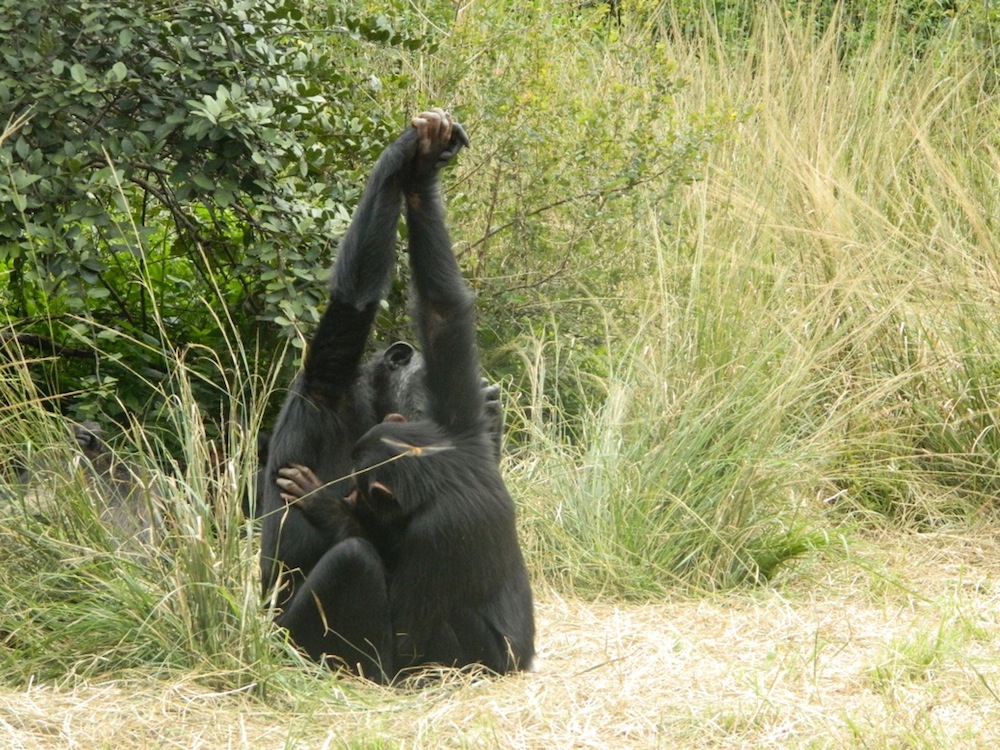When you purchase through link on our site , we may earn an affiliate commission . Here ’s how it work .
The killing of baby wild chimpanzee by female adult of their own kind may be more common than was thought .
What drive these mysterious infanticide by female is not yet absolved , but scientist currently hypothesize that clashes over stomping reason might fuel these conflicts and that human impingement on chimpanzee dominion might exacerbate the situations .

A female chimpanzee and her infant.
Male chimpanzee arewell lie with for violence , include the killing of untested . Female chimps , on the other manus , " have for a long metre been consider as the less aggressive sex activity , " say comparative psychologist Simon Townsend at the University of St. Andrews in Scotland .
Primatologist Jane Goodall found an ill-famed elision to this notion of peaceful female in 1976 with what she nickname a " barbarous execution " by chimpanzees named Passion and Pom . This cannibalistic female parent - daughter duo together belt down and eat at least three chimp baby at Gombe Park in Tanzania , with Goodall herself intervening once to forbid another death by shouting and throwing sticks and stones .
Still , in the absence seizure of any other significant evidence for similar violent death , researcher speculate the Passion and Pom killing might mayhap have been isolated deviate conduct .

New fieldwork has now revealed three more infanticidal attacks by female in the Sonso Pan troglodytes community in Budongo Forest in Uganda , suggest such " lethal aggression may not be anomalous behavior , " Townsend tell LiveScience .
alert to the killing by sounds of chimpanzee screams , last year Townsend and his colleagues directly witnessed one infanticide , where a bleeding mother with a one - week - old child in towage was pursue by six female person , five of which had clinging infants themselves . After a 10 - minute struggle , the infant was take and killed with a bite .
The scientists also found potent circumstantial evidence for two other infanticide . These also imply significant snack to the head , argue these were designed and not accidental killings , findings detail in the May 15 outcome of the diary Current Biology .

In at least one case , grownup male tried to prevent infanticide , with one unsuccessfully set about to deplumate aside struggle females . The researchers suspect the males might have had sex activity with assail females in the past times , " which explains why they attempted to interpose , " Townsend said .
Townsend and his colleagues theorise an strange influx of females into the Sonso chimp community in the preceding five years might have precipitate this deadly aggressiveness , as female person vie for modified foraging areas . Like the Passion and Pom infanticides , two of these killings were perpetrated by coalitions of females deliberately place infants , likely because it is difficult for a lone female to overpower a mother and set on her infant .
The most potential explanation for the surge of immigrant female chimps the investigator go steady was the dissolution of a neighboring community after the death of grownup males .

" male person could be kill in inter - community conflicts , or through disease , or potentially through human encroachment , but we do not know which of these factors , if any , is the most plausible , " Townsend said .
Boston University biologic anthropologist Martin Muller , who did not enter in this study , say that " it does seem probable that ashumans further encroachon chimpanzee population we can expect to see more of this variety of aggressiveness , as competition for resources increment among the chimpanzees . "
Townsend noted , " We were obviously initially shocked by the level of aggression demonstrated by the females . However we also felt privileged to see such a rare upshot because of the important implications it has . " In terms of what scientists might save from such violence , he total , " Any reflexion which further our noesis of chimpanzee demeanour should bear witness useful in the long - full term conservation of this species . "














